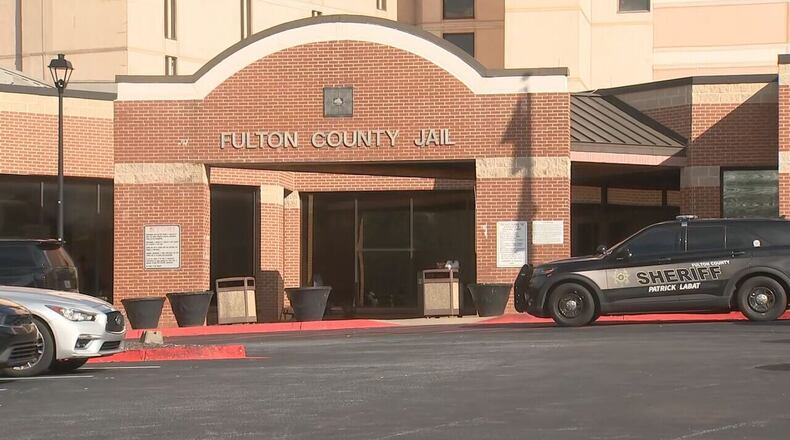Fulton County is making progress on eliminating its backlog of court cases, which should also help — but not fix — chronic jail overcrowding.
The main jail on Rice Street was designed for 1,125 inmates, while the Union City facility was designed to hold 260. Nonetheless, even before COVID-19 emerged, the county held 2,500 inmates at a time.
Then the pandemic shut down the court system. Juries couldn’t assemble. In-person hearings were canceled. Movement within the jail itself was restricted.
But inmates kept coming in, driving their numbers up by more than 1,000, “something we had never seen,” County Manager Dick Anderson said.
In December 2020, the county’s backlog of civil and criminal cases came to 149,200, the biggest in the state. In June 2022, that had reportedly risen to 206,000.
“We would never have caught up,” said Alton Adams, Fulton County’s chief operating officer for justice, public safety and technology.
That led Fulton County commissioners to put $75 million from the federal American Rescue Plan Act toward backlog reduction, the county’s largest single use of ARPA funds. Adams dubbed the reduction effort Project ORCA, in reference to the backlog’s huge size.
As of Feb. 15, the backlog was down to 58,353, Anderson reported. But the jail population continues to rise. It stood at 3,648 on Feb. 5, up nearly 100 from a month before, he said.
Of those, 1,767 people had not been indicted on at least one charge, Anderson said. While many of them may have already been indicted on other charges, “we believe there are 800-900 individuals in the jail that have no indictments,” Adams said.
He said District Attorney Fani Willis decides when and on what charges inmates are indicted, but her office is aware of the need to move jail-related cases through the system.
In reaction to jail overcrowding, the county has deals with Cobb County and the city of Atlanta to house inmates in their facilities. About 250 Fulton inmates are in Cobb’s jail, and up to 700 may go to the Atlanta City Detention Center, potentially costing $50 million over a four-year span. Jail officials expect ORCA and other programs to reduce the need for the additional beds.
The rate of clearing cases has slowed to 1,000 to 2,000 per month, Anderson said. That needs to accelerate if the backlog is to be cleared by the end of 2024, he said. Easy cases were handled first and speedily, but many that remain are more complicated, Anderson said.
There were “absolutely” some inmates stuck in jail throughout COVID-19 lockdown, just waiting for their cases to be dealt with, Adams said. And the backlog included far more than active criminal cases: Business deals stalled as civil complaints couldn’t be resolved, he said.
“The fact is, you’re talking about people whose lives were basically put on hold when the court system shut down,” Adams said.
Within two months of the December 2020 backlog report, the county set up equipment to hold first court appearances and release hearings virtually, Adams said. Five “Zoom rooms” opened on each floor of the jail – not just for hearings, but so inmates could talk to lawyers and family, he said.
The county began using Zoom for jury selection too, and 54 courtrooms were equipped for virtual hearings. In-person jury selection only resumed last November, Adams said.
About the Author
Keep Reading
The Latest
Featured



